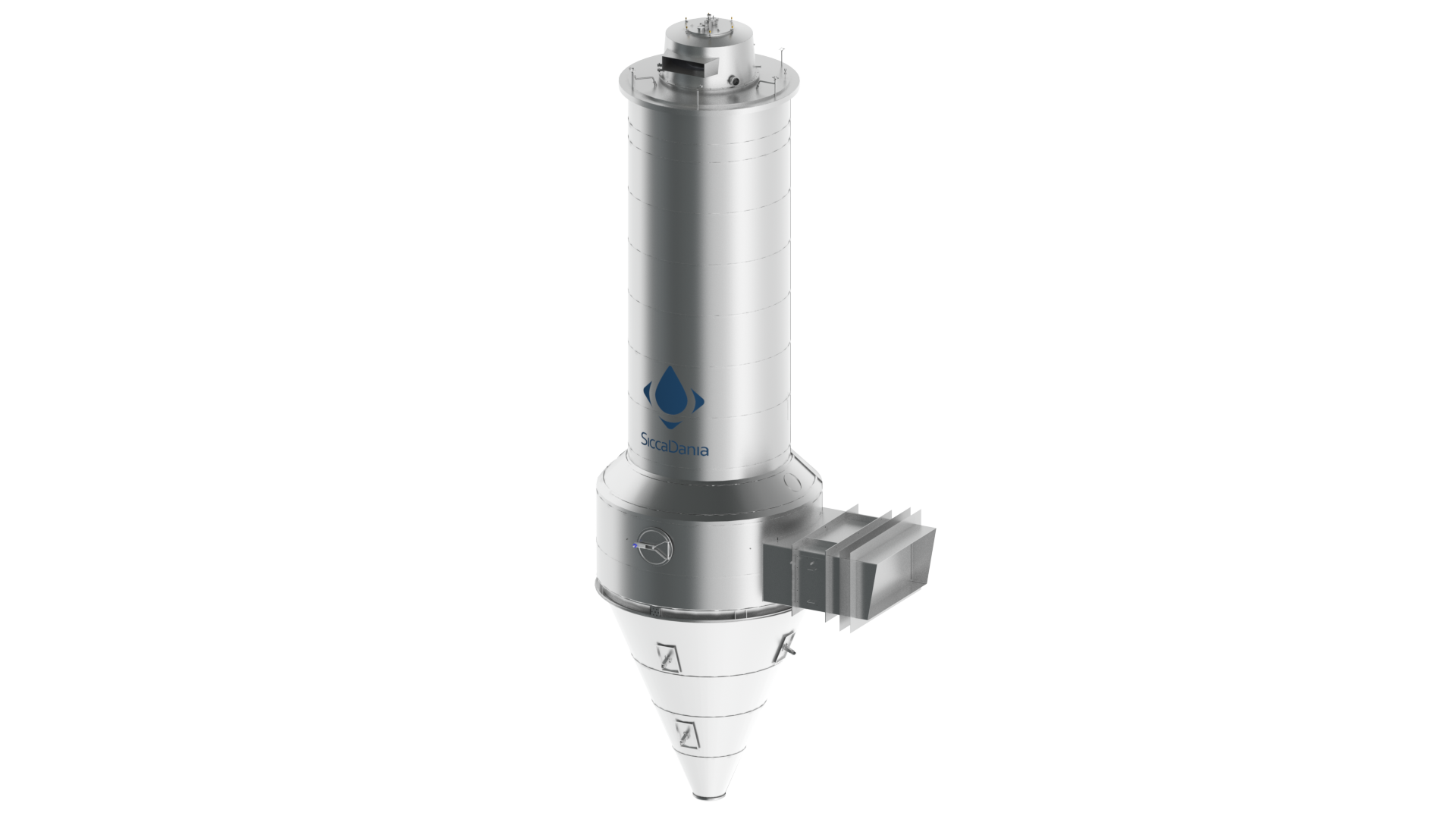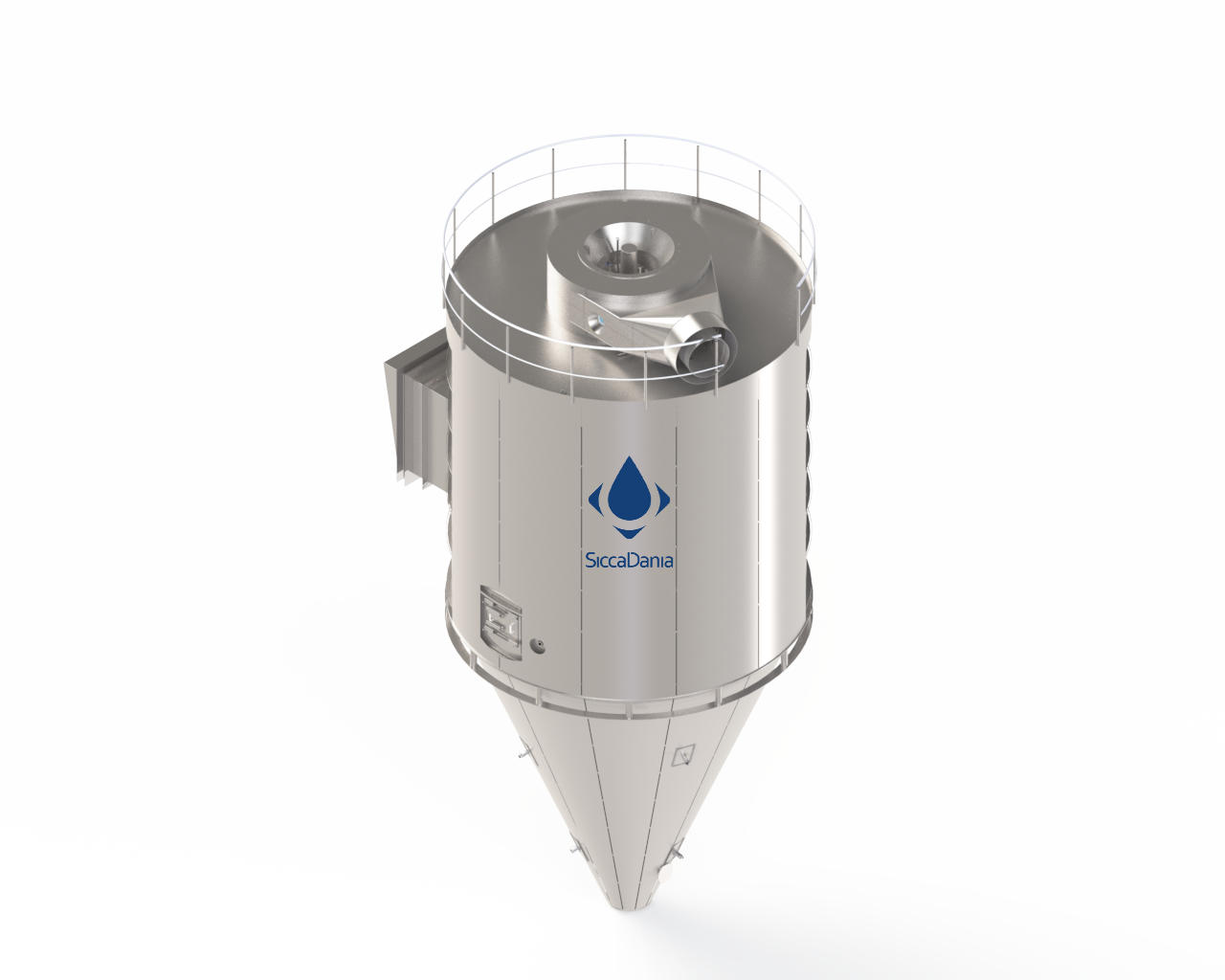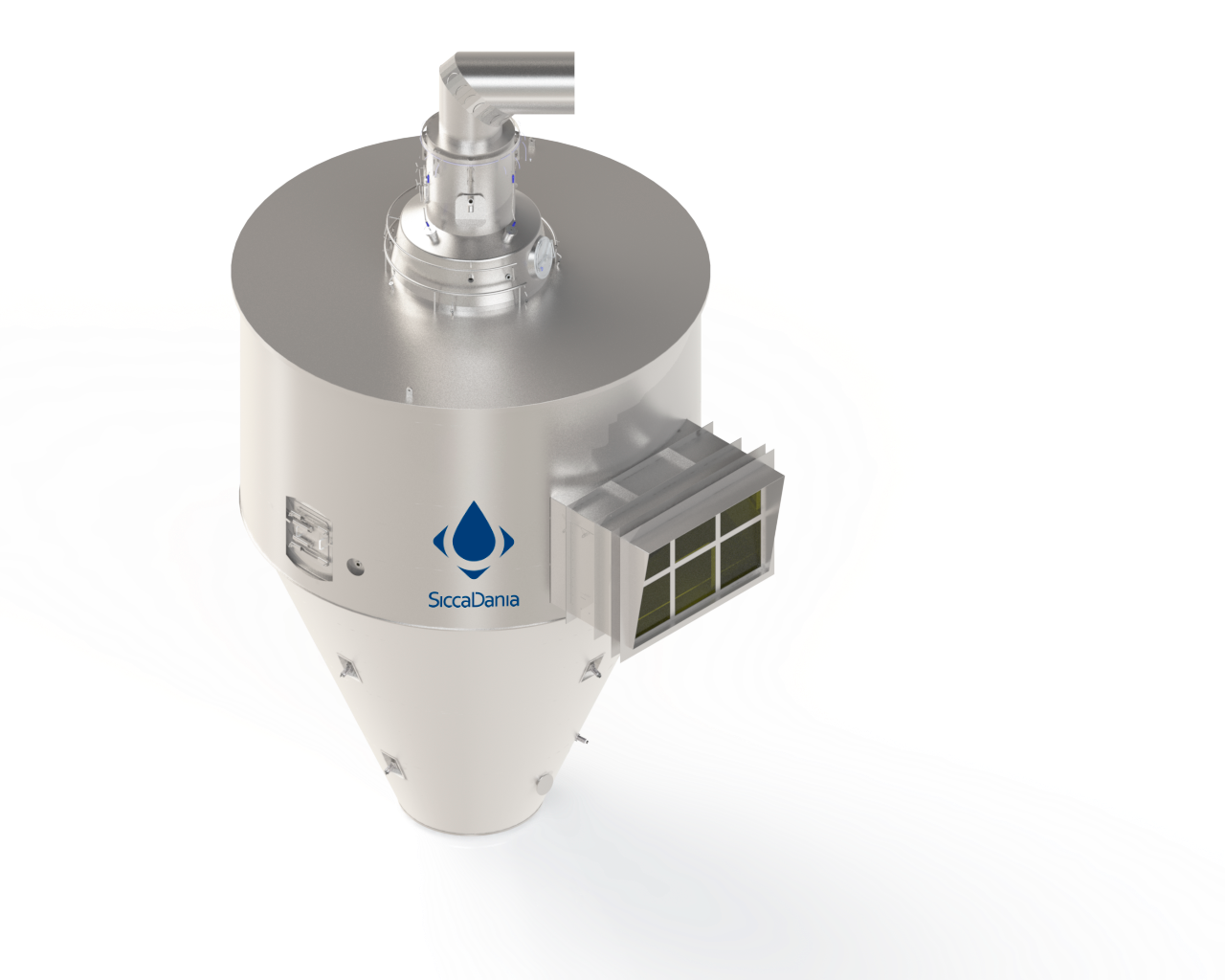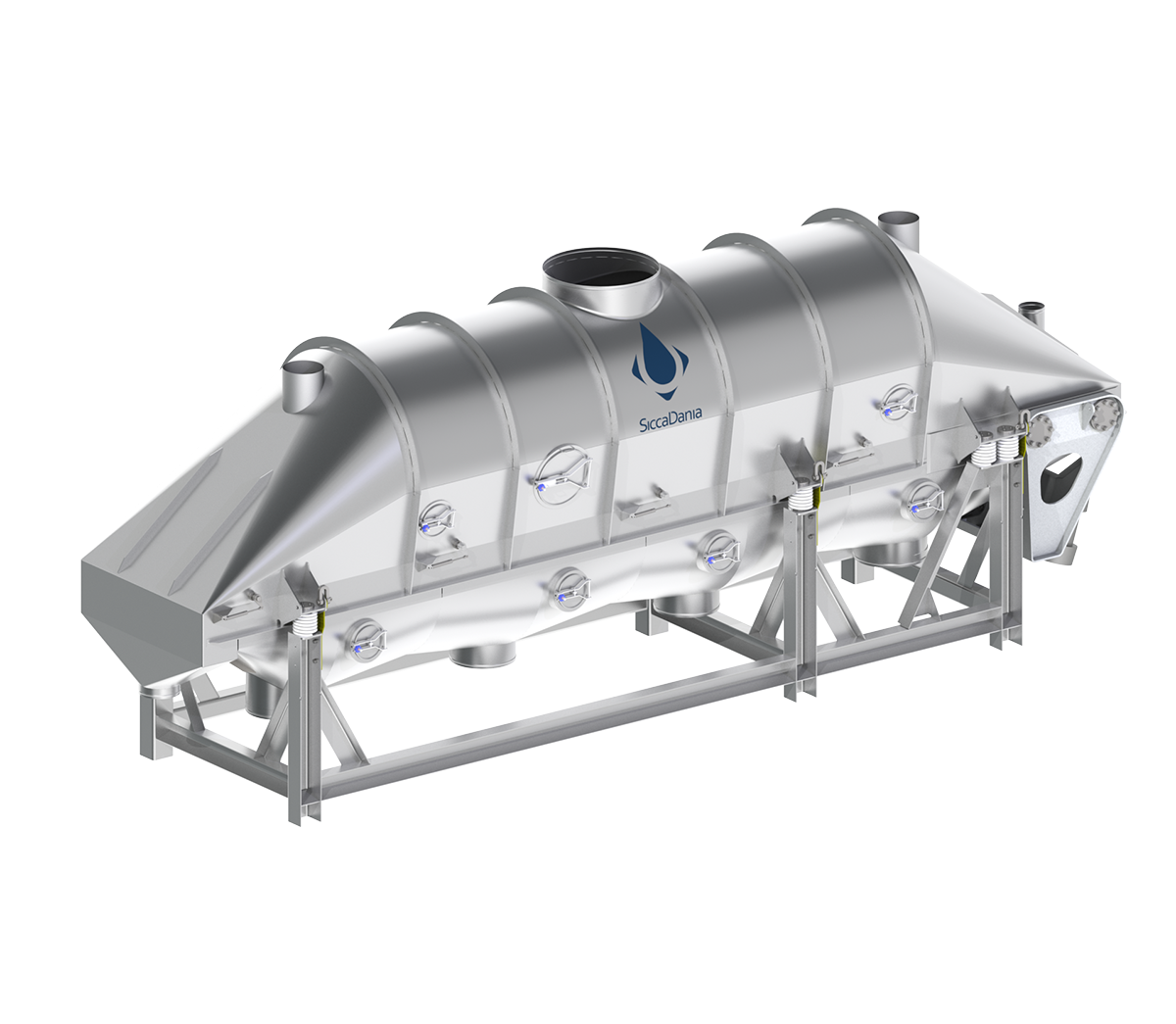SiccaDania offers single, two and three-stage spray drying equipment incorporating wide-body and tower-form-shaped drying chambers. Our spray dryers range in size to produce either a few kilos or high tonnages of powder per hour. The chamber design selection is closely tied to the desired dryer performance and powder requirements.
SiccaDania supplies the latest designs of spray dryers due to extensive in-house technology know-how in this exact discipline.
Process overview
Feed system
The feed system controls the supply of the feed as a liquid form to the atomiser. To achieve low energy consumption, the feed is often preheated before entering the high-pressure feed pump and afterwards pumped to the atomiser. There are two ways of performing the atomisation of the feed at the top of the drying chamber; centrifugal or nozzle atomisation. The end powder product specifications determine the type of atomisation system.
Main air heating system
The main air heating system supplies the drying chamber with the designed amount of air. The air rate is calculated with SiccaDania’s process calculation program. The program is based on the actual ambient conditions at the physical place where the dryer will be installed.
Spray drying calculations take the ambient conditions such as humidity and temperature as well as ground-level into consideration. These parameters have a huge influence on the air amount required to dry the feed into powder. The main air system consists of air filters, pre-heating systems, air heaters, supply fans and from time to time dehumidification systems. The main air system is constructed according to the actual requirements of the product and the ambient conditions.
Drying chamber
In the drying chamber, the evaporation of the water from the feed takes place. The design of the drying chamber depends on the type of product to be dried.
The drying chamber is designed to provide sufficient residence time for the product in the chamber, in order to obtain the correct evaporation. This ensures that the product is not kept too long in the hot air zone, which could cause degradation of the product. The shape of the chamber is also a parameter when looking for specific particle sizes and product qualities.
Internal fluid bed
The internal fluid bed is an integrated part of the drying chamber. The internal fluid bed is often used for secondary drying at a lower temperature, which prevents deposits on the conical sides of the chamber. The thermal efficiency of the dryer is also improved by this 2. stage of drying. The internal fluid bed is widely used within the dairy and food industries where products are often heat sensitive.
External fluid bed
The external fluid bed can be divided into several sections, depending on the spray dryer application. The external fluid bed is either a standalone unit for specific functionality powders, or it is an integrated part of the spray drying system. Either of these configurations will apply the final drying and cooling of the product.
SiccaDania will calculate the correct design and drying/cooling parameters for the application. Fluidisation velocities and applied air temperatures in relation to the design of the perforated plate give the final product quality.
Secondary air systems
The secondary air system supplies all fluid beds, fines return, atomiser cooling and CIP nozzle purge air systems. Each system is individually regulated to the correct temperature, filter grade and flow and can also be combined with dehumidification systems where necessary. This makes the complete drying system very flexible. Combining the main air system with the secondary system with manifolds eliminates the risk of leakage from additional heat exchangers.
Fines and air filtration system
The fines coming out of the drying chamber and the external fluid bed together with the exhaust air will be separated from the exhaust air before letting it into the atmosphere.
Cyclones and bag filters are the most common ways of filtrating the fines from the air. Cyclones seldom stand alone. This is because the emission will often violate the environmental requirements in terms of the permitted mg of powder per m3/air. Therefore, a bag filter is necessary.
A bag filter can be a standalone solution as this technology is able to remove the required powder fines before outlet to the atmosphere. The fines are collected in a fines return system, thereby the powder loss is reduced to a minimum. The fines can be re-entered to the top of the drying chamber, to achieve agglomeration of the powder or they can be sent to the internal or external fluid bed. Again, the required powder specifications will decide the design of the fines system.
Powder sifter
The final step of the drying system is the powder sifter. The powder sifter will separate the large powder particles from the powder, size is determined for the separation. The off size is bagged off and the powder can be either directly packed into big bags or conveyed to a silo system for other packing systems.
As a spray dryer supplier, we offer:
- Cost-efficient custom-made spray dryers with guaranteed yield
- Newest technology developed in-house
- On-time delivery
- Low energy consumption in operation
- Full-service partnership
With this focus, SiccaDania looks to lower the Total Cost of Ownership and ensures that your business needs and expectations are met.
Turnkey solutions
SiccaDania engineers turnkey projects where spray dryers are involved. We possess the know-how regarding the upstream and downstream processes e.g., feed pre-treatment (mixing, concentration, homogenisation, heat treatment) and powder handling (agglomeration, cooling, conveying, and packaging).











